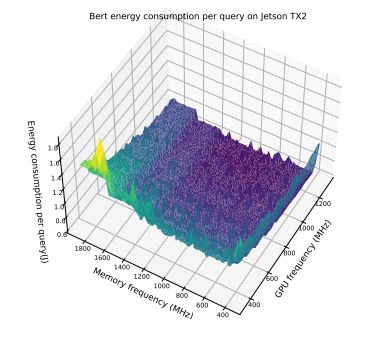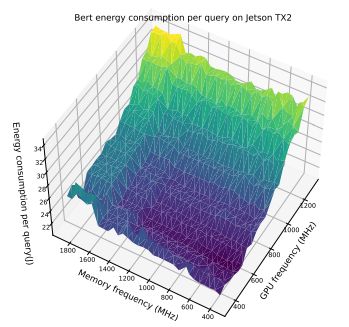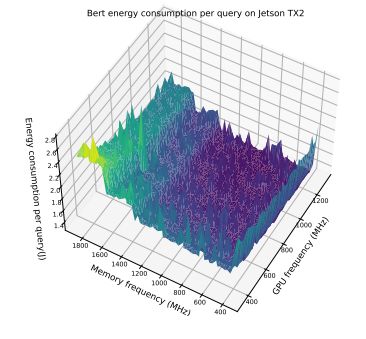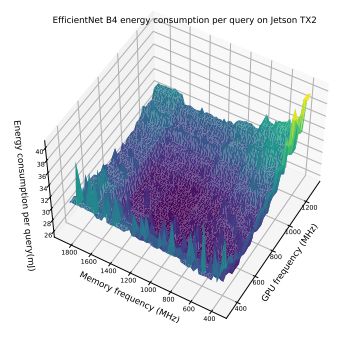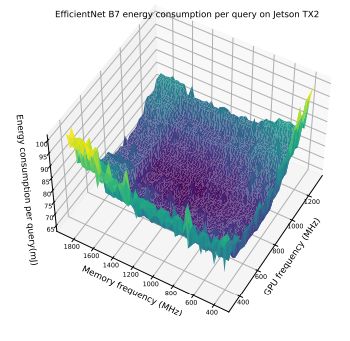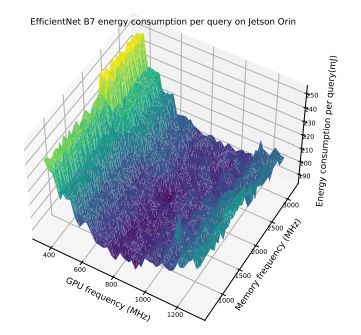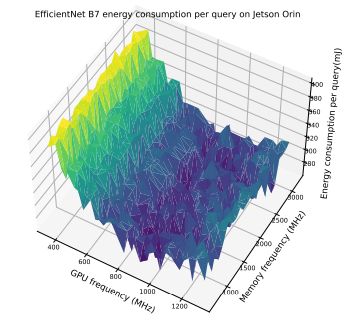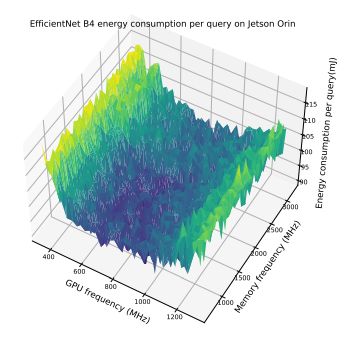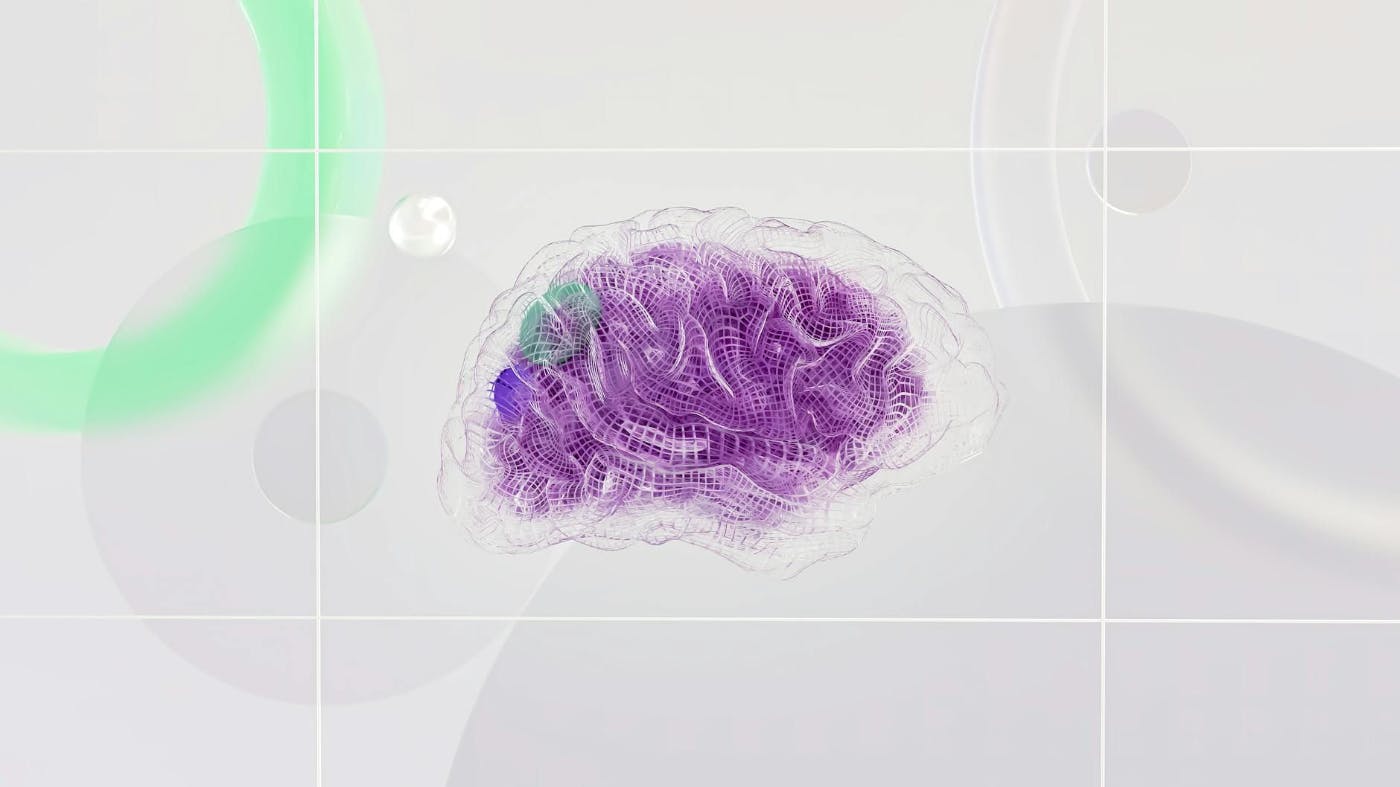This paper is available on arxiv under CC BY-NC-ND 4.0 DEED license.
Authors:
(1) Minghao Yan, University of Wisconsin-Madison;
(2) Hongyi Wang, Carnegie Mellon University;
(3) Shivaram Venkataraman, [email protected].
Table of Links
- Abstract & Introduction
- Motivation
- Opportunities
- Architecture Overview
- Proble Formulation: Two-Phase Tuning
- Modeling Workload Interference
- Experiments
- Conclusion & References
- A. Hardware Details
- B. Experimental Results
- C. Arithmetic Intensity
- D. Predictor Analysis
B EXPERIMENTAL RESULTS
In this section, we further demonstrate the tradeoff between memory frequency and maximum GPU frequency by presenting an array of results. These results underline the interesting observation that the energy consumption patterns vary for the same model operating on different devices. Furthermore, even for the same model device pairing, the optimization landscape can be significantly influenced by the batch size. This underlines the complexities of energy optimization and the need for an adaptive framework that can take these factors into account. Figures 6 − 12 show the energy consumption patterns of EfficientNet and Bert on Jetson TX2 and Orin under various batch sizes. Table 7 shows the optimal CPU frequency and corresponding energy consumption reduction in image preprocessing.
